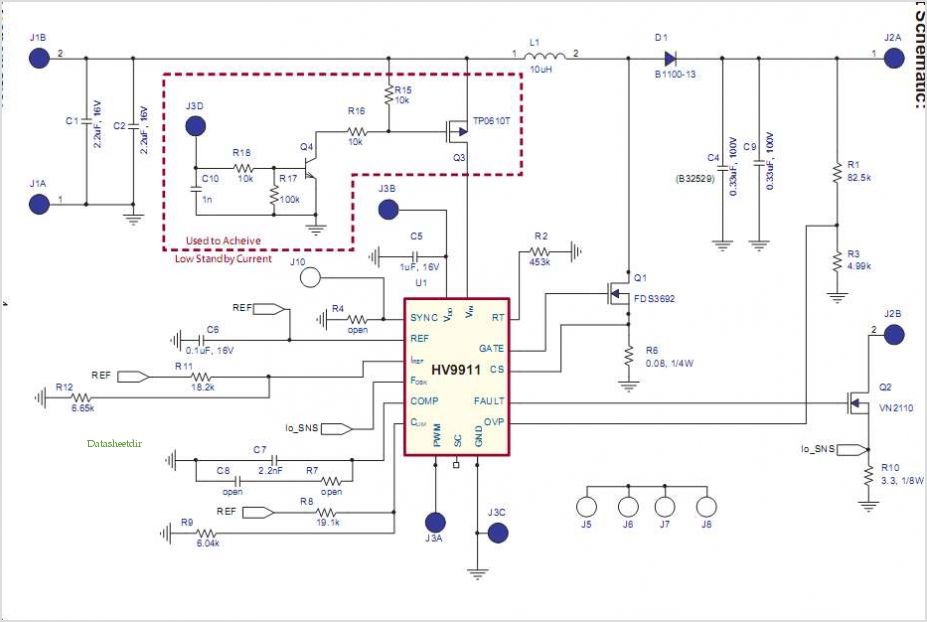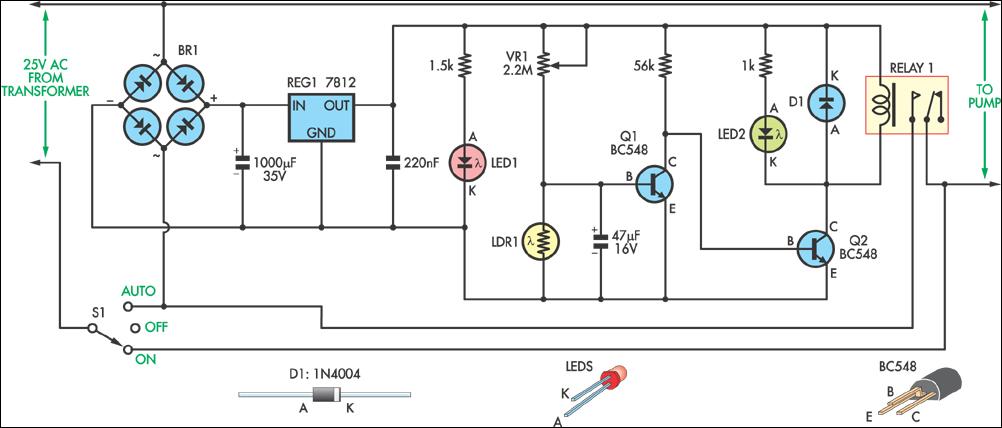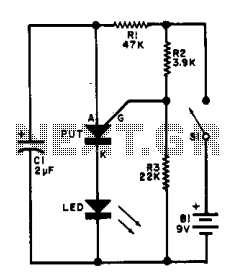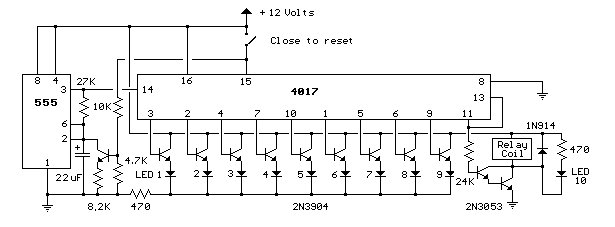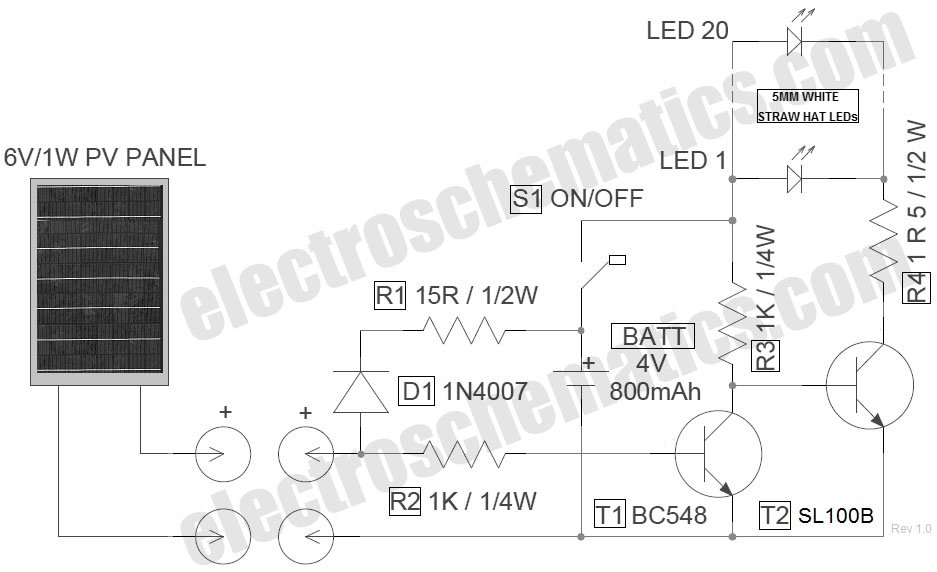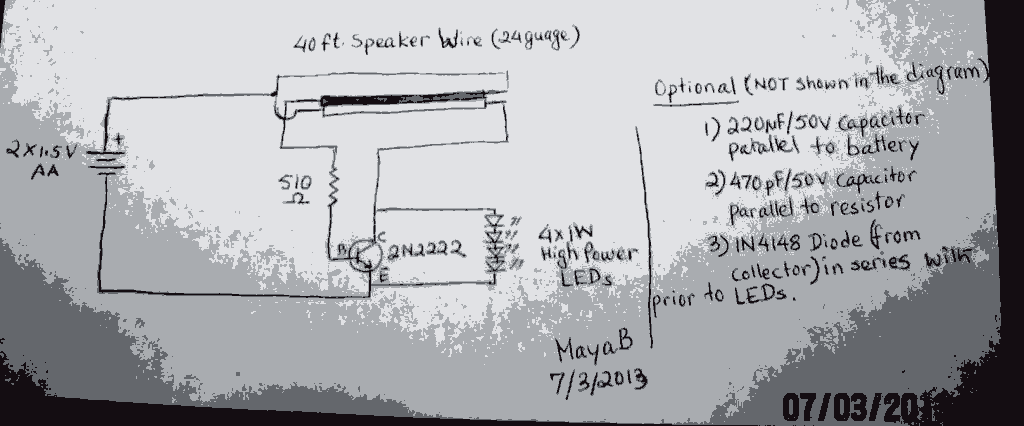
4017 LED Knight Rider
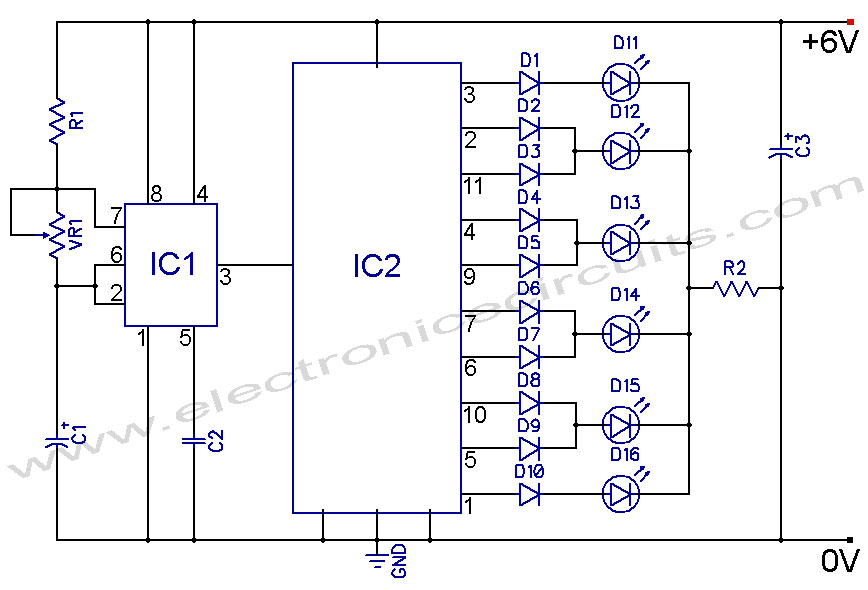
4017 LED Knight Rider Running Light Circuit Diagram. In this 4017 Knight Rider circuit, the 555 timer is configured as an oscillator. It can be adjusted to produce a variety of timing intervals.
The 4017 LED Knight Rider circuit utilizes a 555 timer IC configured in astable mode to generate a continuous square wave output. This output serves as the clock signal for the CD4017 decade counter, which sequentially activates a series of LEDs, creating the characteristic "running light" effect reminiscent of the iconic Knight Rider television show.
In the circuit, the 555 timer's frequency can be adjusted by changing the values of the resistors and capacitors connected to it. The output from the timer triggers the CD4017, which has ten outputs corresponding to its ten counting states. Each output turns on an LED in succession, while the previous LED turns off, resulting in a visual effect where the lights appear to "run" back and forth.
The circuit can be powered by a DC power supply, typically ranging from 5V to 15V, depending on the specifications of the components used. It is important to ensure that the current-limiting resistors for the LEDs are appropriately calculated to prevent damage to the LEDs. The design can be further enhanced by adding additional features, such as adjustable speed control or the integration of more LEDs to create a more complex light pattern.
Overall, this circuit is an excellent demonstration of basic electronic principles, combining timing, counting, and visual output in a simple yet engaging manner.4017 LED Knight Rider Running Light Circuit Diagram In this 4017 Knight Rider circuit, the 555 is wired as an oscillator. It can be adjusted to give.. 🔗 External reference
The 4017 LED Knight Rider circuit utilizes a 555 timer IC configured in astable mode to generate a continuous square wave output. This output serves as the clock signal for the CD4017 decade counter, which sequentially activates a series of LEDs, creating the characteristic "running light" effect reminiscent of the iconic Knight Rider television show.
In the circuit, the 555 timer's frequency can be adjusted by changing the values of the resistors and capacitors connected to it. The output from the timer triggers the CD4017, which has ten outputs corresponding to its ten counting states. Each output turns on an LED in succession, while the previous LED turns off, resulting in a visual effect where the lights appear to "run" back and forth.
The circuit can be powered by a DC power supply, typically ranging from 5V to 15V, depending on the specifications of the components used. It is important to ensure that the current-limiting resistors for the LEDs are appropriately calculated to prevent damage to the LEDs. The design can be further enhanced by adding additional features, such as adjustable speed control or the integration of more LEDs to create a more complex light pattern.
Overall, this circuit is an excellent demonstration of basic electronic principles, combining timing, counting, and visual output in a simple yet engaging manner.4017 LED Knight Rider Running Light Circuit Diagram In this 4017 Knight Rider circuit, the 555 is wired as an oscillator. It can be adjusted to give.. 🔗 External reference
